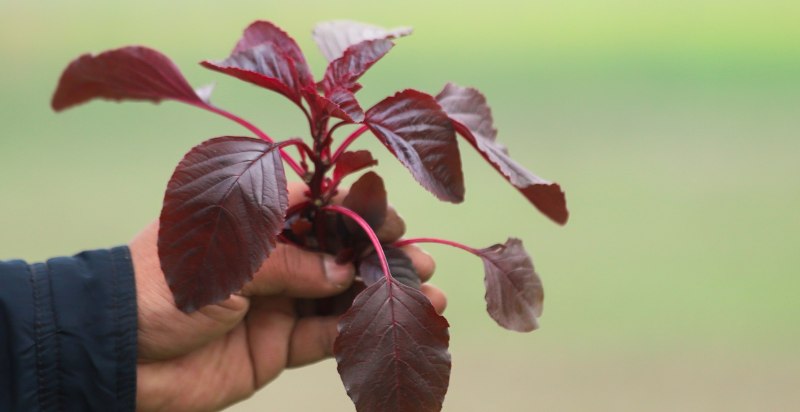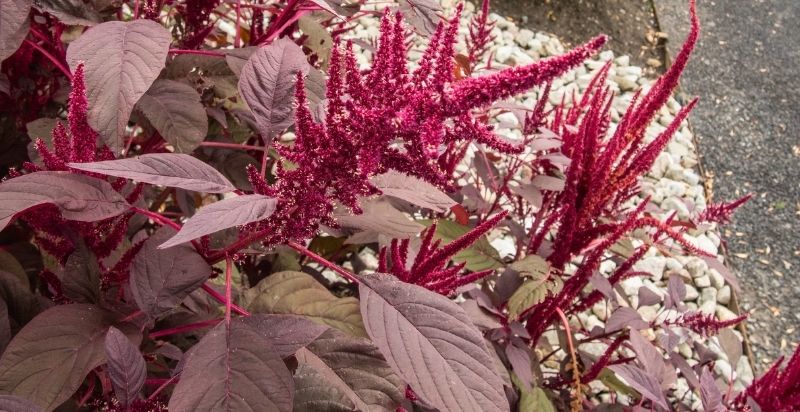Red Amaranth is a unique and ancient superfood used for centuries to nourish, heal, and provide sustenance. It’s a highly nutritious grain packed with protein, fiber, vitamins, minerals, and essential fatty acids. Red Amaranth is versatile enough to be enjoyed in various dishes, from salads to soups. It’s also a great source of antioxidants, which can help protect your cells from the damage caused by free radicals.
What is Red Amaranth, and Why are they Popular?
Red Amaranth is an ancient grain that has been cultivated for centuries. It’s a type of amaranth, a group of grains closely related to quinoa and buckwheat. It is high in protein, fiber, vitamins, minerals, and essential fatty acids. It also contains antioxidants that can help protect your cells from damage caused by free radicals. It’s often used as a gluten-free alternative to wheat and other grains.
| Scientific Name: | Amaranthus Cruentus |
| Higher classification: | Amaranth |
| Rank: | Species |
| Family: | Amaranthaceae |
| Kingdom: | Plantae |
| Order: | Caryophyllales |
| Plant Type: | Annual |
| Mature Size: | 2–4 ft. tall, 1-2 ft. wide |
| Sun Exposure: | Full sun to partial shade |
| Soil Type: | Moist but well-drained |
| Soil pH: | Neutral, acidic |
| Bloom Time: | Summer, fall, winter |
| Flower Color: | Red |
| Hardiness Zones: | 2-11 (USDA) |
History and Origin of the Red Amaranth:
Red Amaranth has been cultivated for centuries in Central and South America, particularly in Mexico, where it’s still a staple food. It was first introduced to Europe by the Spanish in the 16th century but stayed relatively unknown until recently. Recently, it’s become increasingly popular as a health food due to its high nutritional value.
Where Red Amaranth is Grown and Harvested?
Red Amaranth is grown in tropical and subtropical regions worldwide, including Mexico, India, and Ethiopia. It’s a short-season crop that matures quickly, usually within 40 to 50 days. The seeds are harvested by hand or machine and then dried before being stored for later use.

Nutritional Benefits of Red Amaranth:
Red Amaranth is a great source of protein, fiber, vitamins, minerals, and essential fatty acids. It’s particularly high in iron and magnesium, making it an excellent choice for vegetarians who need additional sources of these nutrients. It also contains antioxidants that can help protect your cells from the damage caused by free radicals.
Flavor Profile of Red Amaranth:
Red Amaranth has a pleasant, nutty flavor that pairs well with other grains and vegetables. It can be used in salads, soups, stews, porridge, or even as an addition to baked goods. Its mild flavor makes it a great substitute for rice or quinoa.
How to Pick Red Amaranth?
When selecting Red Amaranth, look for uniform grains in size and color. The grains should also be free from any signs of spoilage, such as discoloration or mold. Store the grains in an airtight container in a cool, dry place, and they will keep for up to one year.
Where to Find the Best Quality Red Amaranth?
Red Amaranth can be found in many health food stores, natural grocers, or online. Look for organic, non-GMO varieties to get the highest quality product. You can also find them at some specialty markets as well as ethnic grocery stores that specialize in Mexican and Latin American products.

How to Store Red Amaranth?
Red Amaranth should be stored in an airtight container in a cool, dry place. It will keep for up to one year if properly stored. Once cooked, It can also be frozen and stored for up to three months.
Ways to Use Red Amaranth in Everyday Life:
Red Amaranth can be used in various dishes such as salads, soups, stews, porridge, and baked goods. It can also be cooked and served as a hot cereal or added to smoothies for an extra boost of nutrition. Red Amaranth is also a gluten-free alternative to wheat and other grains.
Conclusion:
Overall, Red Amaranth is a nutrient-dense grain that offers many health benefits. It’s high in protein, fiber, vitamins, minerals, essential fatty acids, and antioxidants that can help protect your cells from the damage caused by free radicals. It’s an excellent choice for vegetarians and those looking to increase their nutrient intake. With its mild flavor and versatility, Red Amaranth will surely become a staple in your kitchen.
- Everything You Wanted to Know About Red Tamarillos - June 2, 2025
- A Guide to Tulips: Everything You Need to Know & More… - June 2, 2025
- Guanabana: Description, Flavor, Benefits, And Uses - May 27, 2025

1 thought on “Red Amaranth: Origin, Flavor, Benefits, And Uses”
Comments are closed.